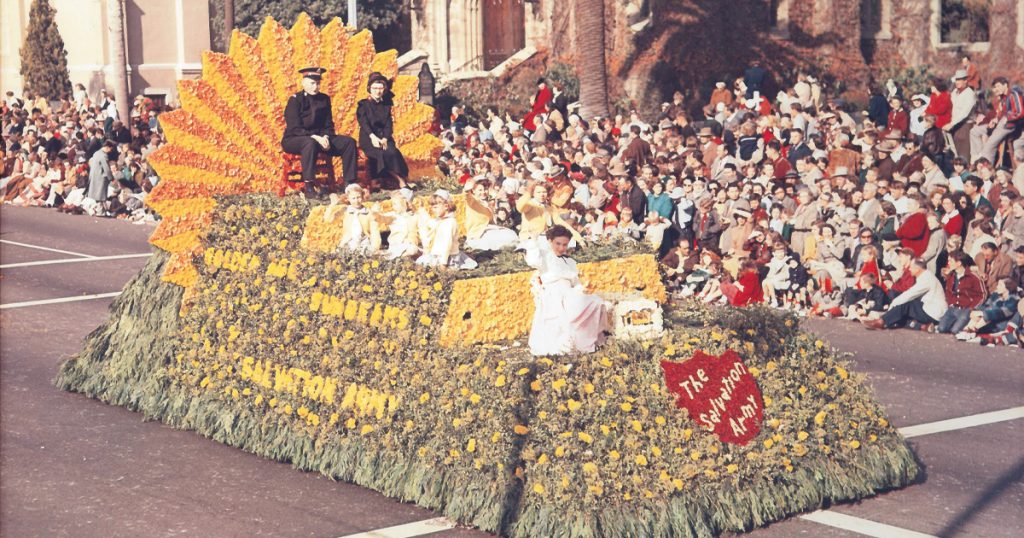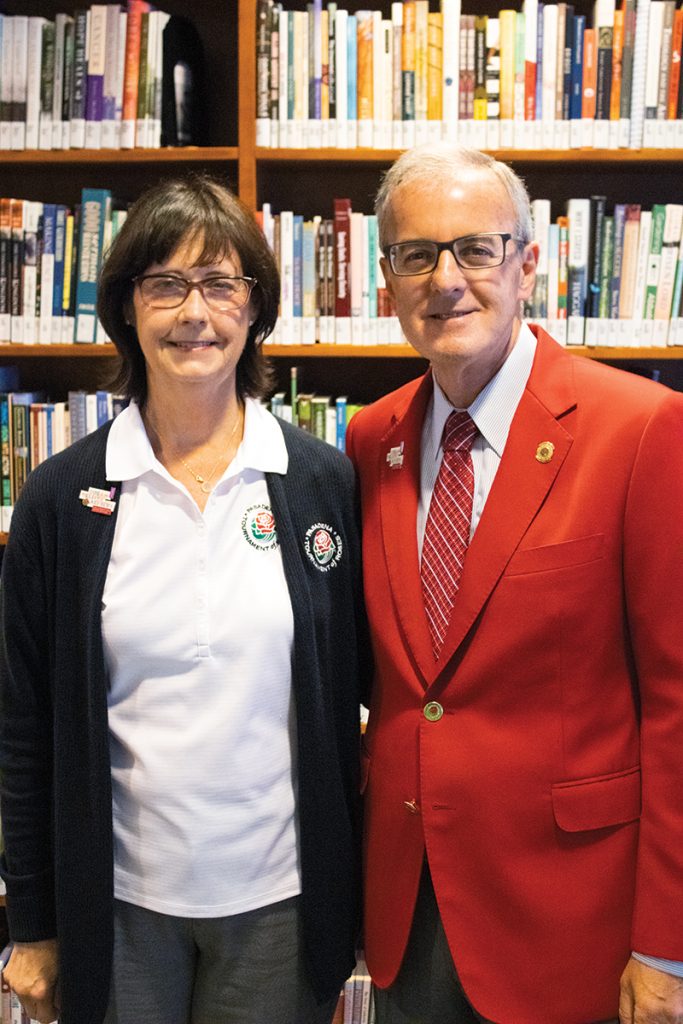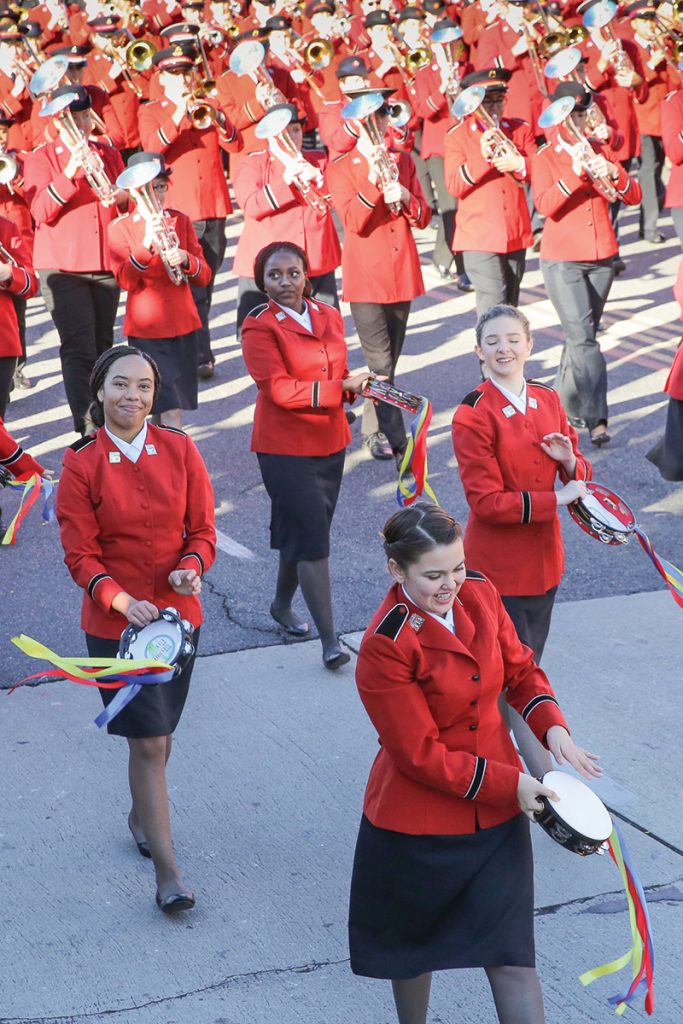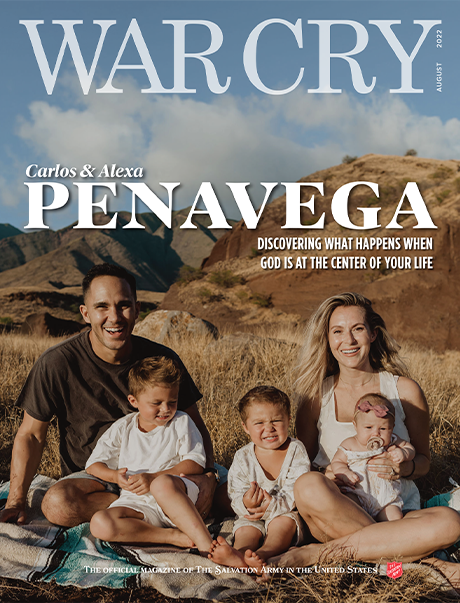The Army & the Roses
For the 98th consecutive year, a Salvation Army Band marches in the Tournament of Roses Parade.
The Tournament of Roses has a long and storied history reaching back to the end of the 19th century, as well as a collaborative relationship with The Salvation Army that extends through most of the parade’s lifespan. The first Rose Parade was held in downtown Pasadena in 1890, hosted by the Valley Hunt Club, a group of wealthy Midwesterners and Easterners who had formed a new community in Pasadena to live comfortably and escape the cold of winter. The then-small event has since grown into a widely celebrated New Year’s tradition.
“The parade [is] a national moment of celebrating new beginnings every January 1st,” says Dr. Robert Miller, the 2020-2022 president of the Tournament of Roses association. “Roses signify the beauty of nature,” he continues. “The Rose Parade is the largest floral parade of its type in the world. It’s unique.” He states that the Valley Hunt Club started the “parade of roses” by simply adorning a collection of carriages with flowers and decorations, and it soon became a large community event. “Five years later, the association was born when it got to be too big of an effort on the part of the Valley Hunt Club,” says Dr. Miller.
That first parade had an audience of about 3,000 people. The success of the early parades led the association to decide that the event needed to be followed up by some larger form of festivities. The first attempt was a college football game, the inaugural Rose Bowl in 1902, but it was deemed unsuccessful, partly due to Michigan defeating Stanford 49-0. For the next several years, the parade was followed by games and competitions such as jousting, tug-of-war and others. “They did ostrich races, and they did the chariot races,” says Dr. Miller, “and they went back to college football as it picked up momentum.” Starting in 1916, the Rose Parade was followed by the Rose Bowl Game every year. Dr. Miller also notes that this year marks the 100th anniversary of the official Rose Bowl Stadium, first opened in 1922 at a cost of approximately $220,000. This year also marks the 133rd Tournament of Roses Parade and the 108th Rose Bowl Game.
The parade switched from horse-and-buggy floats to motorized ones in 1920. This was the year that the Pasadena Tabernacle Corps joined the Rose Parade, marking The Salvation Army’s first time partaking in the New Year’s festivities. “Large groups began to [join] the parade as a means of getting their messages out,” says Dr. Miller. He shares that the parade is an opportunity to display what the Army is all about. “The diversity, the equity, the inclusiveness of the Army is on display every year. The talents, the ministry, all those things that make the Army what it is.” The Salvation Army has been in every Rose Parade since 1920, more than any other band.

Kevin Larsson, Divisional Music Director of the California South Division and bandmaster of the Army’s Rose Parade group, cites an old story as the reason The Salvation Army is invited back to the parade every year. “One parade early on, we were the only band to finish because of a massive rainstorm.” He’s not sure whether it’s true or not, but tradition says that the Army’s determination to finish that particular parade is why we’re invited back in perpetuity.
Each year, the Rose Parade typically has about 6,000 to 7,000 participants among the 118 groups or “units,” with an additional 15,000 people behind the scenes ensuring the event goes off without a hitch. Of the 118 units in this year’s parade, 43 were standard floats, 21 were marching bands, 18 were equestrian units and the rest were vehicle units and others of various kinds. The Army is the only religious group represented with a marching band.
Who’s In the Band?
The musicians that march for the Army are a widely varied bunch from all over. Larsson says that the mainstays are local Salvationists in California and the Western Territorial Youth Band. They’re typically joined by a handful of players from Canada, two delegates from every American division, an entire guest band and, every five years or so, by several guest bands or some international groups. This year, the guest band was the Divisional Band from the Florida Division. They not only marched in the Rose Parade, but also in the Holiday Bowl Parade and at Disneyland. Larsson counts the total number of bandsmen in this year’s group at around 190, slightly larger than the band’s usual size of 150-180.
The Rose Parade is an incredible ministry opportunity where the band can play Christian hymns live for an audience of an estimated 750,000 people in attendance per year, plus the 40 million people who watch at home on their TVs or streaming devices, and an additional 15 to 25 million viewers with international distribution of the parade. “It’s the biggest open air of all time,” says Larsson. For those familiar with Salvation Army history, the event harkens back to the Army’s origins of playing hymns on the streets of London. Larsson choked up recalling the crowd’s response to The Salvation Army on the street during past parades. “You can really hear people shouting…They often sing along to Amazing Grace.”

Given the high visibility of the event, the Army’s leadership has recently seen fit to provide funds for the foreseeable future to ensure Salvationists from around the nation can continue to participate in this ministry.
The 2021 Tournament of Roses Parade was canceled last New Year due to COVID-19 and was replaced by a two-hour celebration special on television hosted by the organization. The only other years the parade has been canceled were the wartime years of 1942, 1943, and 1945. This year, those in attendance in the grandstands were asked to provide either proof of vaccination against COVID-19 or a negative COVID test result within 72 hours before the event. All attendees who purchased tickets were required to wear a mask covering, regardless of vaccination status. Dr. Miller confirms that all performers in the parade must also have been vaccinated or have taken a negative COVID-19 test within the same time frame as attendees in the grandstands. Members of The Salvation Army band were tested multiple times before the event: once before congregating for their rehearsal week and again within the 72-hour window.
Contrary to what one might expect, Dr. Miller was hopeful that COVID-19 would have a positive impact on the parade’s viewership. “The reality is that we’re coming out of a very dark period into the light again, and people are thirsty for things that we all took for granted,” says Dr. Miller. “There’s a good chance that we will have greater television numbers this year … I believe that we will see a very healthy number of people on the streets as well.” Larsson was also positive about the parade’s comeback after last year’s cancellation. “In fact, we’re going to be back stronger than ever.”
Bands Through the Years
This article was published in the January 2022 issue of The War Cry.







